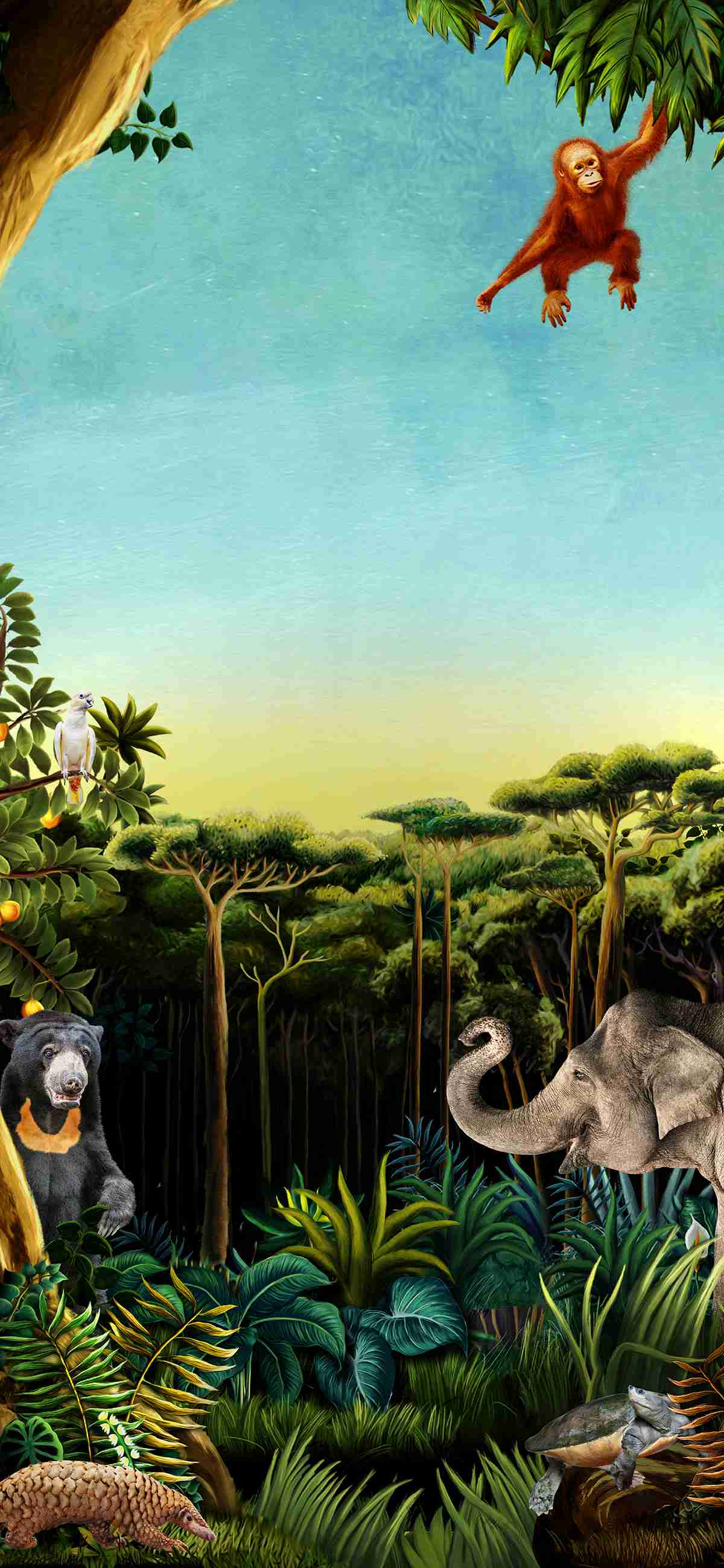Bountiful Baby Year for Singapore’s Wildlife Parks in 2021
23 Feb 2022
Charismatic Contributors
Christmas Day was extra special at Night Safari with the birth of a Sunda Slow Loris. Native to Southeast Asia, the species is listed as endangered on IUCN’s Red List of Threatened species. These endearing primates have been threatened with extinction due to the growing demand in the illegal pet trade and supposed healing properties in traditional medicine. With their numbers dwindling in the wild, this birth is truly welcomed as it contributes to Mandai Wildlife Group’s efforts in managing the international ex-situ breeding programme for this species. Mom and baby are currently enjoying bonding in an off-exhibit area.
The monumental birth of Singapore’s first Giant Panda cub happened on 14 August 2021 at River Wonders—the result of years of hard work and dedication from the animal care teams. A fitting national celebration in August, Le Le’s birth was another significant breakthrough in Mandai Wildlife Group’s breeding efforts. With threatened species such as the Giant Panda, each new arrival counts, especially to a nation that has been waiting with bated breath for the pitter patter of panda paws the last seven years.
Singapore Zoo’s pack of African Painted Dogs, named for their colourful tri-coloured coats, welcomed four additions to their litter, after a 16-year hiatus. Africa’s most threatened large carnivore was once widespread across the continent’s savannahs in large packs. However, these prolific hunters are now globally endangered with extinction, having fallen victim to human encroachment. These social animals are active communicators and use their large distinctive ears to listen out to each other’s calls when separated. As pack animals, every member contributes to caring for the young pups. Guests to Singapore Zoo can look out for the lively pups usually loping around the boulders in their exhibit under the watchful eye of an older pack member.
Singapore Zoo’s Grevy’s Zebras, managed under the EAZA* Endangered Species Programme (EEP), put into practice the art of procreation as well. They added extra stripes for contributing to the global ex-situ conservation efforts of this highly threatened species, when two young foals bounded into the herd last year. Izara, who was born on September 30 last year, joined her family in welcoming half-brother Tari on 28 December. Both can be seen munching on hay next to their moms, blissfully oblivious to the fact that there are only around 3,000 zebras of their species left in the wild.
The team at Singapore Zoo’s RepTopia also enjoyed much success in the breeding department, having hatched close to 70 endangered Golden Mantellas. These bright yellow amphibians are endemic to central-eastern Madagascar and feed on a variety of insects. A pair of Sakishima Grass Lizards added to the count. This endangered species reproduces slowly as females generally lay clutches of only one or two eggs. Once abundant in the Southern islands of Japan, these long-tailed lizards are now not only hard to spot in their native habitat but are rarely found in zoos. Native Singapore wildlife received a boost to numbers as well, with the addition of three endangered Southeast Asian Box Turtles, also known as Malayan Box Turtles. These turtles sport a dark olive head with three yellow stripes along each side. For the first time, Singapore Zoo also managed to breed the unique False Gharial or Tomistoma. This threatened species of crocodile from Southeast Asia is notoriously difficult to breed under human care as very specific conditions must be met for success.
Jurong Bird Park welcomed its first critically endangered Negros Bleeding-heart Dove chick in just three months after the species’ arrival at the park. The flock represents the first conservation breeding programme established outside of the species’ native country of Philippines and our bird park is the only zoological institution to hold the species. A truly exciting and remarkable achievement for the team working to conserve this highly threatened species. Since then, more chicks have hatched at the park’s dedicated conservation breeding area.
The park also successfully hatched three critically endangered Straw-headed Bulbuls. These gregarious birds have fallen victim to the caged-bird trade due to their melodic voices. Previously common in Southeast Asia, the species has been hunted to extinction in many areas. As the only zoological institution to hold and breed the species for conservation, and the international coordinator for the ex-situ breeding programme, these chicks are significant in building a sustainable population that can eventually help reinforce wild populations, should their current threats be mitigated in the future.
Special Deliveries
In addition, 2021 saw the arrival of many more important animals. Night Safari welcomed the birth of two Masked Palm Civet pups for the first time. While native to Singapore, sightings of this species have been rare compared to the Common Palm Civet. The dynamic duo is now spending quality time at an off-exhibit area with mom. Visitors can look forward to spotting them along the park’s walking trails later this year.
The stork brought a trio of Blue-eyed Cockatoos to Jurong Bird Park. These beauties are vulnerable due to habitat loss and poaching for the illegal wildlife trade. Jurong Bird Park is the only zoological institute breeding this species and is the European Association of Zoos and Aquaria’s (EAZA) designated monitor for this species. The hatchings are a great testament to the animal care team’s hard work and expertise.

